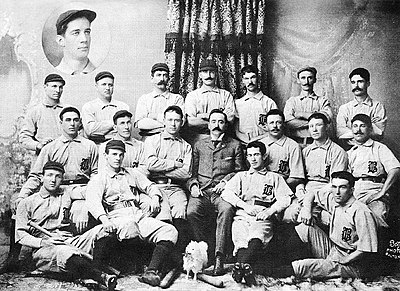This is the basic-only card originally available as part of Strat's spectacular 42-team, Old-timer set. I first purchased this set in 1972 or so and have bought the entire set two more times since then. The later purchases provided me with cards that had the by-now-standard black ink on white card printing, but the '72 purchase arrived with teams having the distinctive shade of blue ink shown above.
It's a great card from one of the best offensive seasons ever. A .373 batting average with 109 walks results in a near-.500 on-base percentage. The extra base hit barrage of 52/18/47 is a wonder to behold. And Strat's conversion of all that into a card is a thing of beauty - the solid HRs on 3-4, 3-5, and 3-6 are both rare and yet not-quite enough, necessitating a minor split on 3-7. Indeed, the "HOMERUN 1, DOUBLE 2-20" result provided me with one of my first hints as to the precision of Strat-O-Matic's work: it seems almost unnecessary and yet they included it to make...his...card... juuuust .... right. A truly epic season crafted into an aesthetically pleasing card. Plus, as a bonus, Lou's card was the only one of its kind (until some Strat policy changes years later): it was free of injuries. Every other player's card contained a result - often in the infrequent 2 or 12 slot for those who were regulars - that would injure a player for anywhere from a moment to a maximum of 15 games. But Lou, in the midst of a historic game-playing streak that would eventually reach 2130 straight games, was exempt from this probability. I loved that Strat understood that about Gehrig and created a card that respected - and captured - his achievement.
All of those aspects could be appreciated about that card as soon as it was delivered. But, now, after 40+ years of playing and handling, there are additional layers of appreciation ... layers that reveal the interaction of the ball-player and the game-player.
Take another look at the card. Notice the curve along the left-hand edge? That's where the card, along with its teammates in a lineup of nine, rested against the opposable-thumb muscle of my left hand. The right-hand side curves? Those are the slight impressions created by the slow carving of curled fingers that kept it in place, at bat by at bat, game by game, season by slowly-evolving season.
How 'bout them stains? There are two prominent ones, set diagonally across from one another. On the upper left, one can see the accumulation of dirt, grime, and oils deposited over eons as my left-hand thumb pushed down on the card, then pushed to the right when an at bat came to an end. The matching browning on the lower right-hand side is the same effect produced by the right-hand thumb finishing the transaction, retrieving the card and bringing it to the bottom of the 9-card lineup. Many of the cards from that set show these signs to some degree but Lou's card, always in the lineup, shows them to the greatest extent.
What you can't tell from the photo is the feel of the card. When they first arrive, the cards often stick together due to a slightly waxy finish. After a few games, a satisfying slip sets in and the cards move more freely. After a thousand games - and that is by no means an exaggeration in the case of this card - the card takes on a velvety smoothness and becomes noticeably slimmer as, tiny layer by tiny layer, a river-rock erosion takes place.
As I think about the sloughing of the card's outer layers over time, I can't help but think about the similar impact this action has had on my fingers ... we know our skin sheds its outermost layers and this constant sliding of fingers and thumbs against Strat cards must accelerate that process. Somewhere those atomic bits of skin and paper are mingling. Indeed, there must be a trail of such erosion, from the living room and kitchen of my parents' apartment in New York City to the dormitories of Syracuse University and the steady stream of the Boston apartments of my 20s and ultimately to the shared spaces with my wife in Vermont ... a 40-year trail of Strat detritus.
I never met Lou Gehrig, obviously; his untimely death in 1941 is part of the mythology of baseball and America. But, through Strat-O-Matic, I've had a relationship with him. While I have grown and changed over time, he has been constant, static, and unchanging while somehow also slowly altering - softening and slimming - through a lifetime of interactions. Our time together is evident on his card; one of the few cases where the impact of a relationship can be visualized.
 |
| Lou Gehrig - a good man to hang out with courtesy of sabr |

























